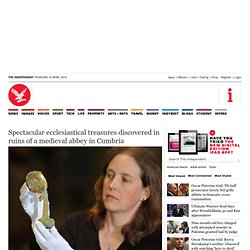

The 'pushy parent' syndrome in ancient Rome. 16 April 2012Last updated at 19:47 ET By Mary Beard Professor of Classics, Cambridge University What were the Romans really like?

Different from us in many ways, but there is much that is familiar in Roman family life and in particular parenting. In 94 AD young Quintus Sulpicius Maximus died. A Roman lad who lived just 11 years, five months and 12 days, he had recently taken part in a grown-up poetry competition, a sort of Rome's Got Talent. He had composed and performed a long poem in Greek. And, though he hadn't actually won, everyone agreed that he had done amazingly well for his age. We know this because his tombstone still survives, put up by his grieving mum and dad. How had he died? Continue reading the main story An overworked child A statue of Quintus Sulpicius Maximus stands on a pedestal overlooking the Piazza Fiume, a busy intersection in central Rome. Sulpicius's parents added some Greek verses of their own. Who knows? Continue reading the main story “Start Quote End Quote.
The helmet itself (side view, without cheek pieces) Spectacular ecclesiastical treasures discovered in ruins of a medieval abbey in Cumbria. Spectacular ecclesiastical treasures discovered in ruins of a medieval abbey in Cumbria - News - Archaeology. An elaborate 14th-15th century abbot’s crook (his staff of office) and his gilt silver inauguration ring were found in a grave just four meters northwest of the high altar at the ruined Cistercian abbey of Furness in Barrow-in-Furness.

The top of the crook is decorated with a silver plaque bearing a gilded image of the Archangel Michael slaying a dragon. Remarkably, some of the original wood of the crook also survives, as does the pointed iron spike at its base – and part of a linen and silk ‘sweat cloth’ designed to prevent the abbot’s potentially perspiring hands coming into contact with the wooden part of the crook. The ring, which would almost certainly have been specially made for his inauguration as abbot, is of gilded silver and is set with a large white gemstone – either a rock crystal or a white sapphire. It’s possible that a secret void behind the stone may contain a sacred relic – potentially a fragment of bone from a saint. 1,000-piece puzzle may unlock secrets to the Roman conquest of Britain - Archaeology - Science.
After years of painstaking conservation work, experts at the British Museum have succeeded in reconstructing the finest Roman battle helmet ever found in the UK.

Originally discovered by a metal detectorist, as literally hundreds of corroded fragments buried in a field in the East Midlands, the helmet has gradually been revealing its secrets to British Museum conservators who have been re-assembling it like a 3D jigsaw. In a laboratory excavation of the block of earth containing the helmet, they discovered that the front of the iron and gilt silver artefact bore a sculpture of a Roman goddess – probably Victory - and that the cheek pieces sported images of a Roman emperor and of the great classical demi-god, Hercules.
But now they are faced with solving an even more challenging mystery – who the helmet originally belonged to and the exact circumstances surrounding its burial. How women evolved blond hair to win cavemen's hearts - Science - News. Academic researchers have discovered that women in northern Europe evolved with light hair and blue eyes at the end of the Ice Age to stand out from the crowd and lure men away from the far more common brunette.

Blond hair originated through genetic necessity at a time when there was a shortage of both food and males, leading to a high ratio of women competing for smaller numbers of potential partners, according to the study published this week in the academic journal, Evolution and Human Behaviour. Until these shortages about 10,000 to 11,000 years ago, humans had uniformly dark hair and eyes. The physical ardour required with hunting bison, reindeer and mammoths in some regions meant many male hunters died and left women with a shrinking pool of breeders.
Flaxen-haired women arose out of a rare mutation but increased in numbers because their chances of breeding turned out to be better. Human hair and eye colour is unusually diverse in northern and eastern Europe ...